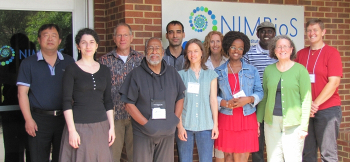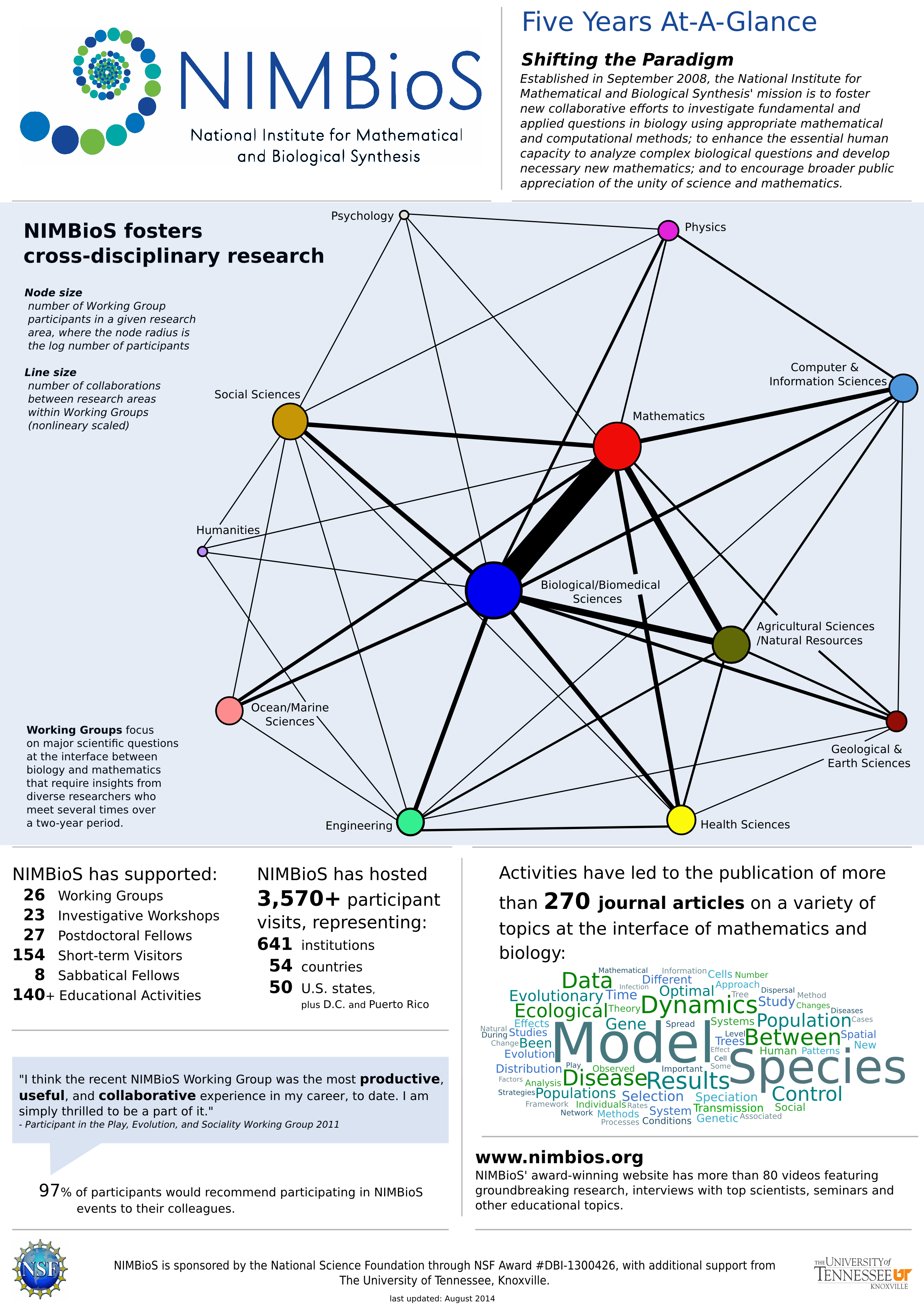About NIMBioS
|
"NIMBioS has united the forces of mathematical and computational biology communities and forever changed the landscape of mathematical biology research and education in the US and the world."
Yang Kuang
|

|
NIMBioS began as a National Science Foundation (NSF) Synthesis Center supported through NSF's Biological Sciences Directorate via a Cooperative Agreement with the University of Tennessee totaling more than $35 million over ten years. Since 2021, it has transitioned away from NSF Center funding, but is still an active and thriving home for the global math bio community. Supporting cutting-edge, cross-disciplinary research at the interface of mathematics and biology, NIMBioS offers a range of services in support of researchers and educators. Since March 2009 when NIMBioS programs officially began, NIMBioS research and educational activities have included more than 8,500 visits by individuals from more than 55 countries and every U.S. state, which have led to the publication of more than 900 journal articles.
A major goal of mathematical models and analysis in biology is to provide insight into the complexities arising from the non-linearity and hierarchical nature of biological systems. While the primary goal of NIMBioS under the original Center grant was to foster the maturation of cross-disciplinary approaches in mathematical biology and the development of a cadre of researchers who are capable of conceiving and engaging in creative and collaborative connections across disciplines to address fundamental and applied biological questions, our current mission is to support the thriving community we helped to create.
The nature of the questions addressed by NIMBioS span all of the life sciences, thus impacting both basic and applied science. These range from specific models and applications (physiological integration, disease projection, reserve design) to fundamental questions about human origins, biosphere functioning, and the emergence of biological patterns at diverse scales. NIMBioS is a primary location for the rapid analysis of numerous questions of direct public policy concern, from the impacts of biofuel development, to the ongoing challenges of invasions of non-native species, to global change issues related to human activity, to predicting the effectiveness of intervention and mitigation strategies to combat global pandemics.
Before NIMBioS, mathematical biology had benefited from the large impact of relatively few individuals and programs that have trained the vast majority of active researchers at this interface. NIMBioS fostered the next step: continuing the development of individuals trained at this interface, but also fostering the development of entire programs that are equipped to educate the array of mathematically competent, biologically knowledgeable and computationally adept researchers needed to address the vast array of challenging questions in this century of biology.
While the original funding and mission of NIMBioS have drawn to a conclusion, NIMBioS is here to stay, continuing to foster and support the community of math bio researchers and we are excited for this new phase of our existence!
Some Information on Our Early Achievements: September 2009 - June 2013
Click on image below for scalable vector graphic (SVG) version.

Click on image above for scalable vector graphic (SVG) version.
Five-year Brochure. NIMBioS' accomplishments during its first five years of funding
NIMBioS
1122 Volunteer Blvd., Suite 106
University of Tennessee
Knoxville,
TN 37996-3410
PH: (865) 974-9334
FAX: (865) 974-9461
Contact NIMBioS


